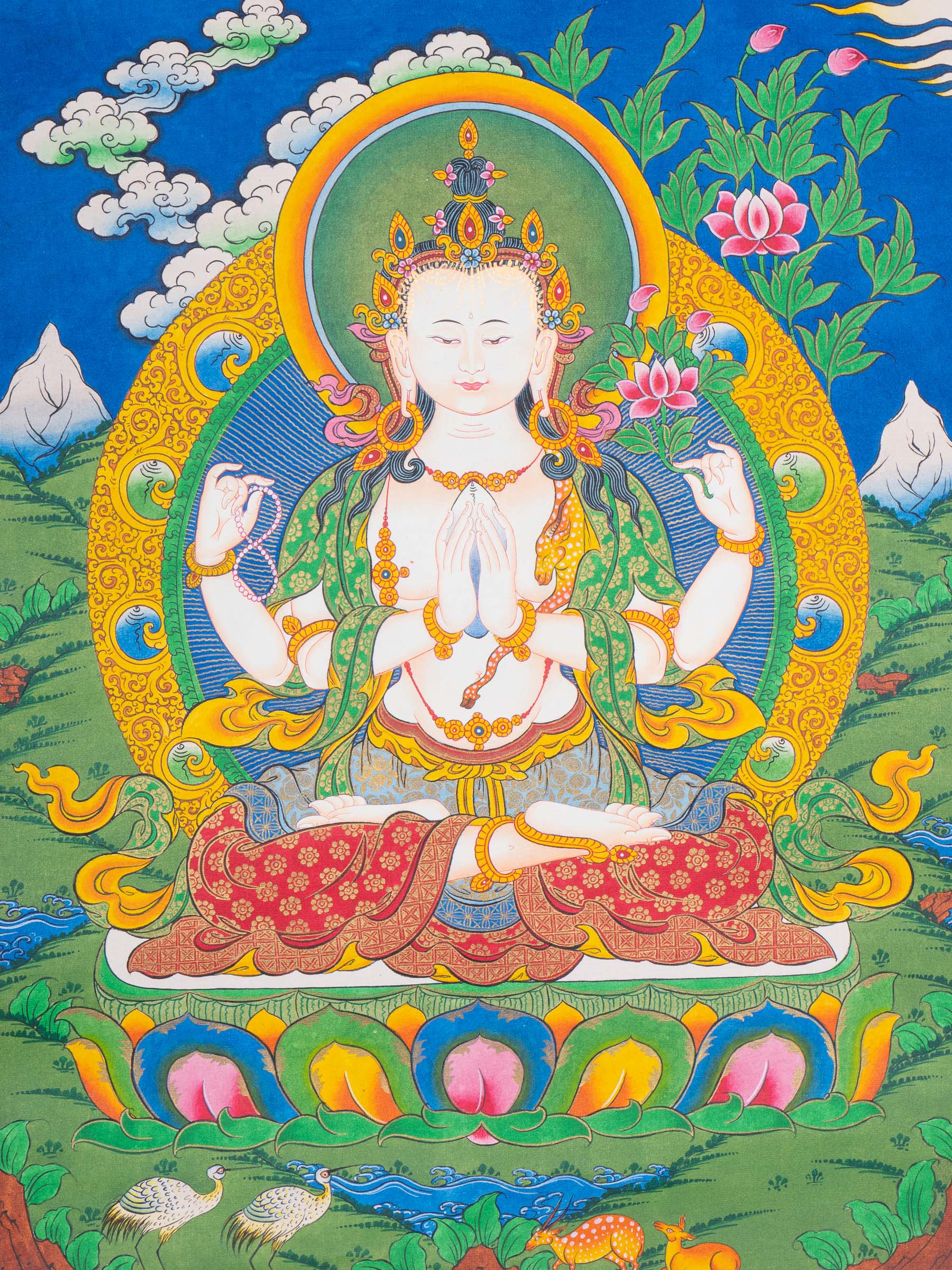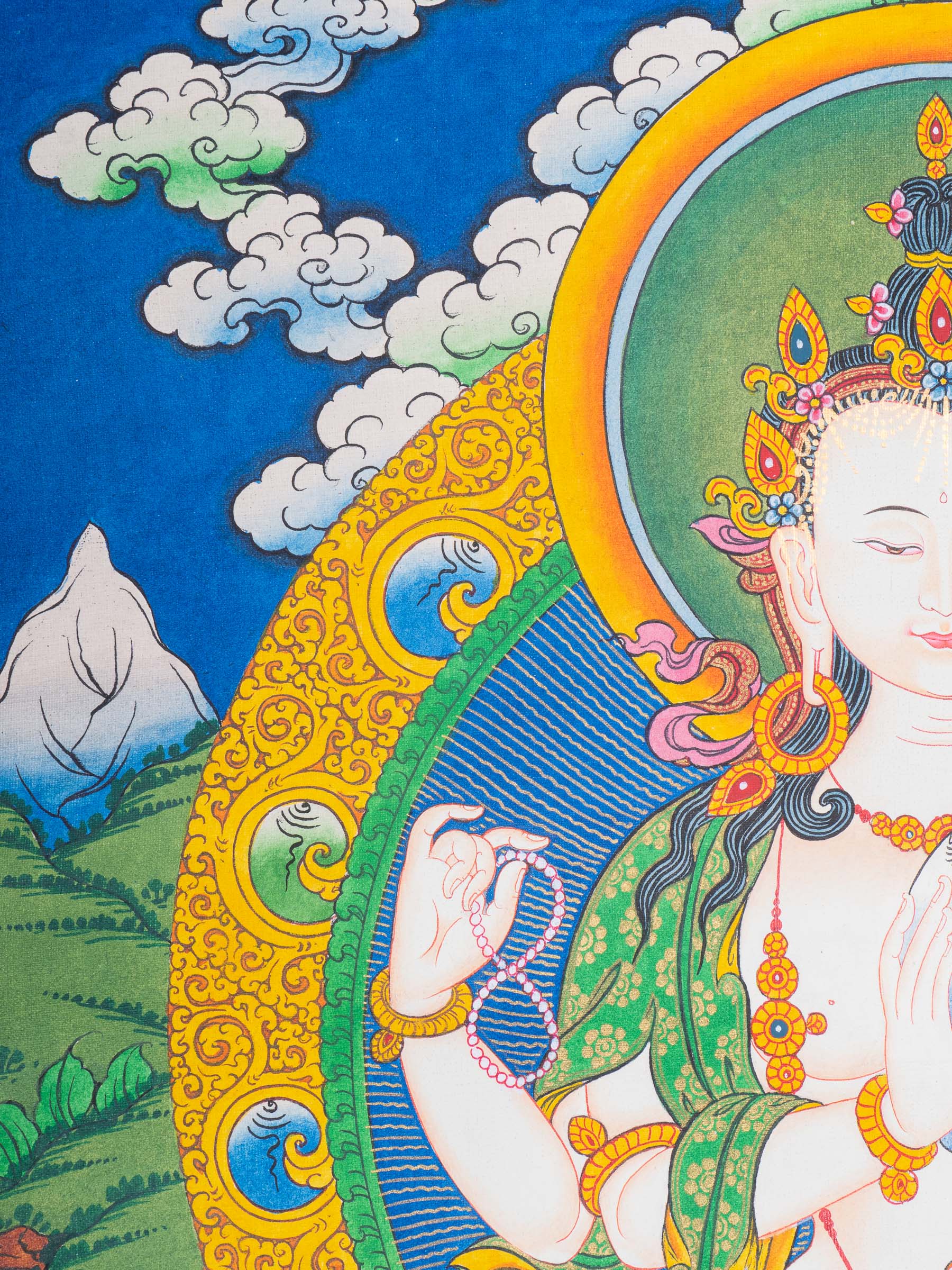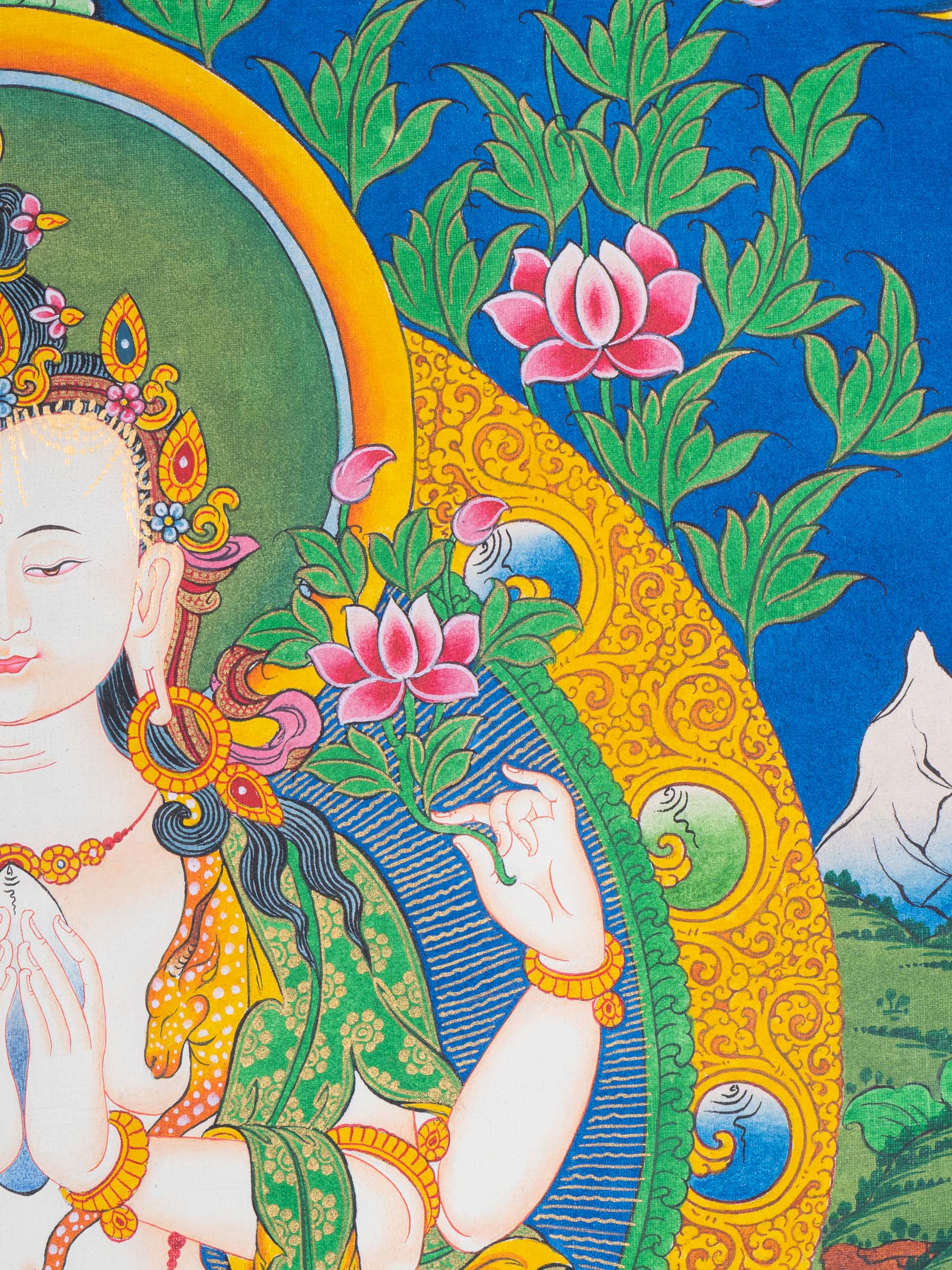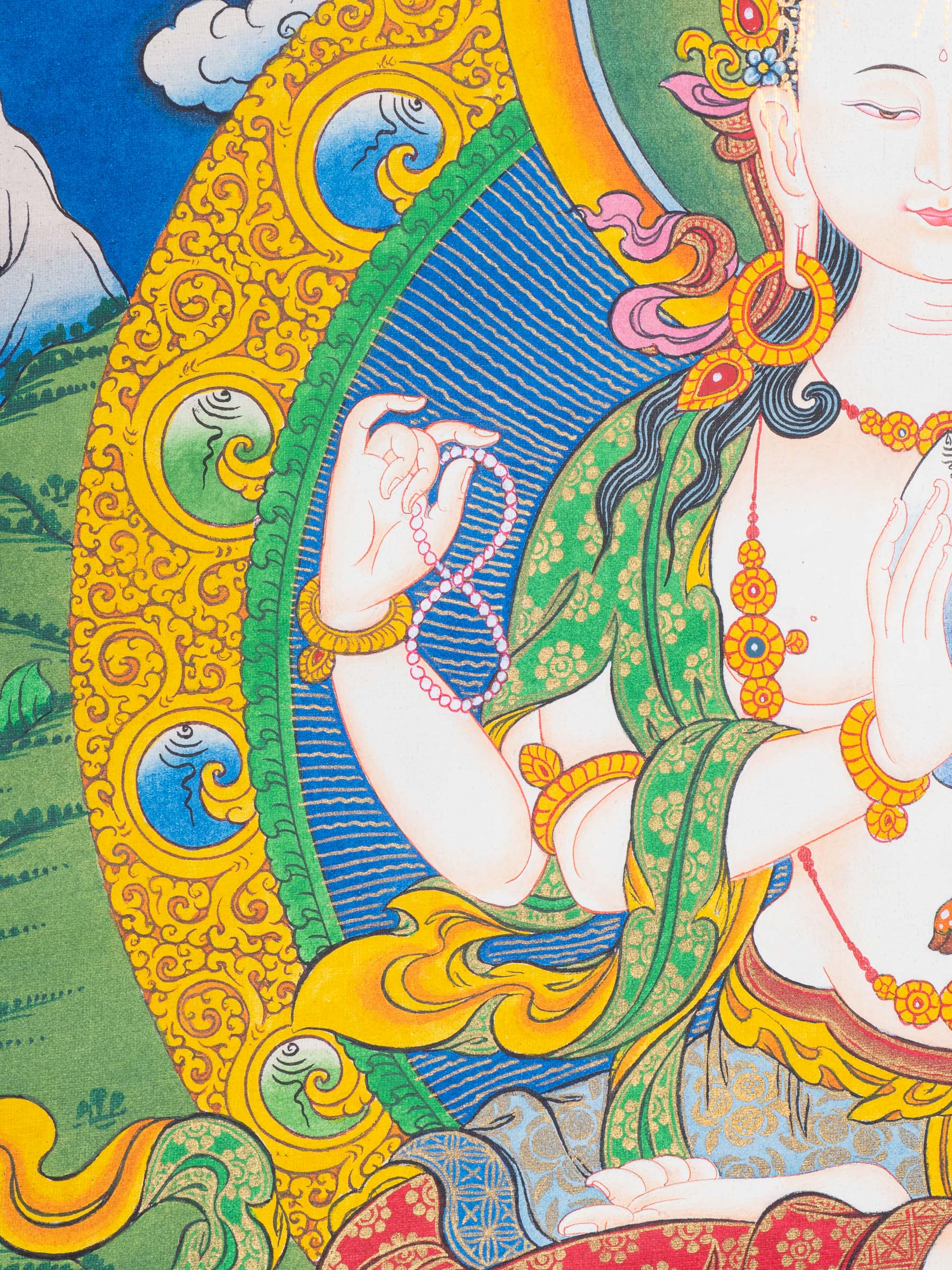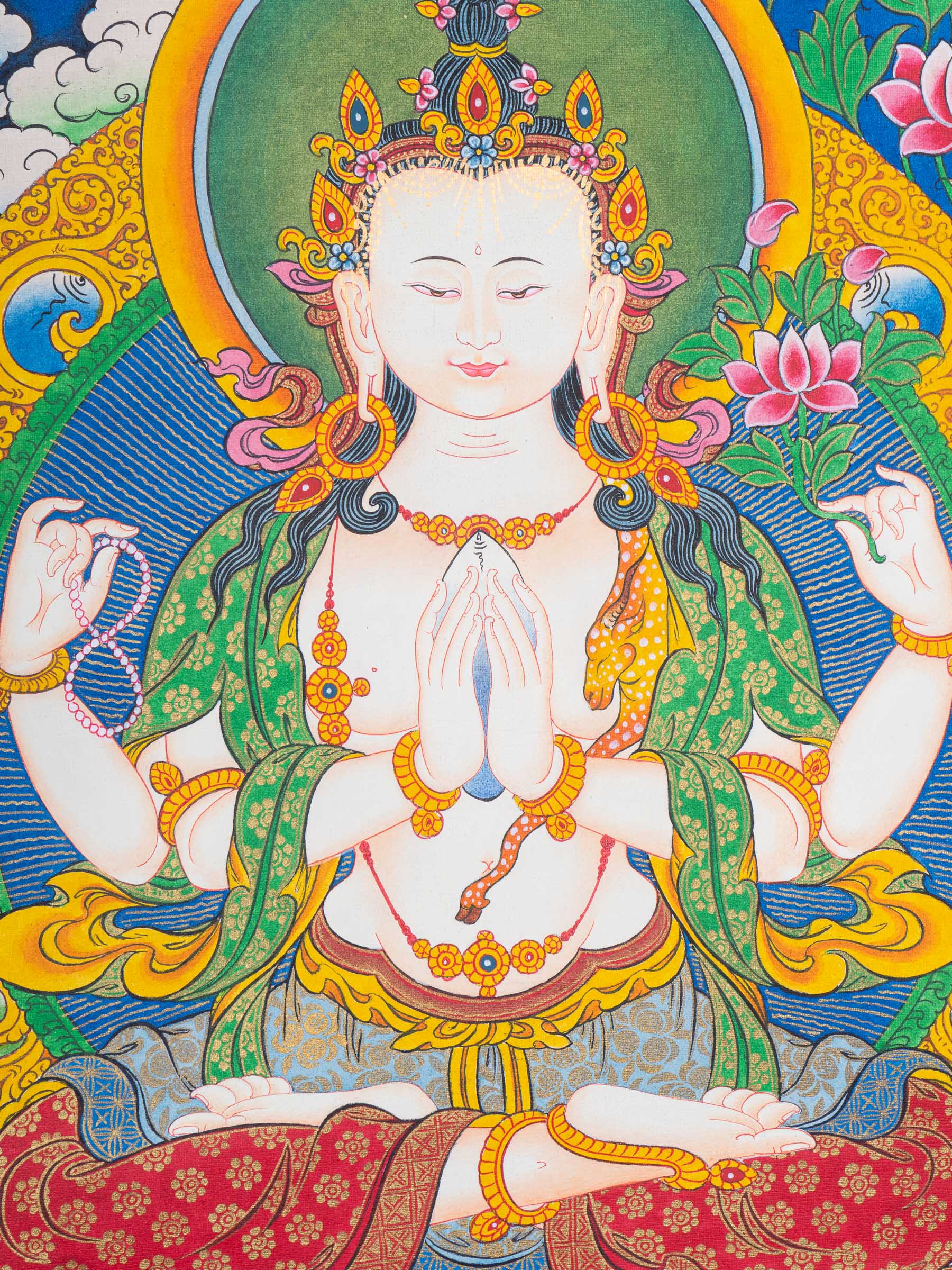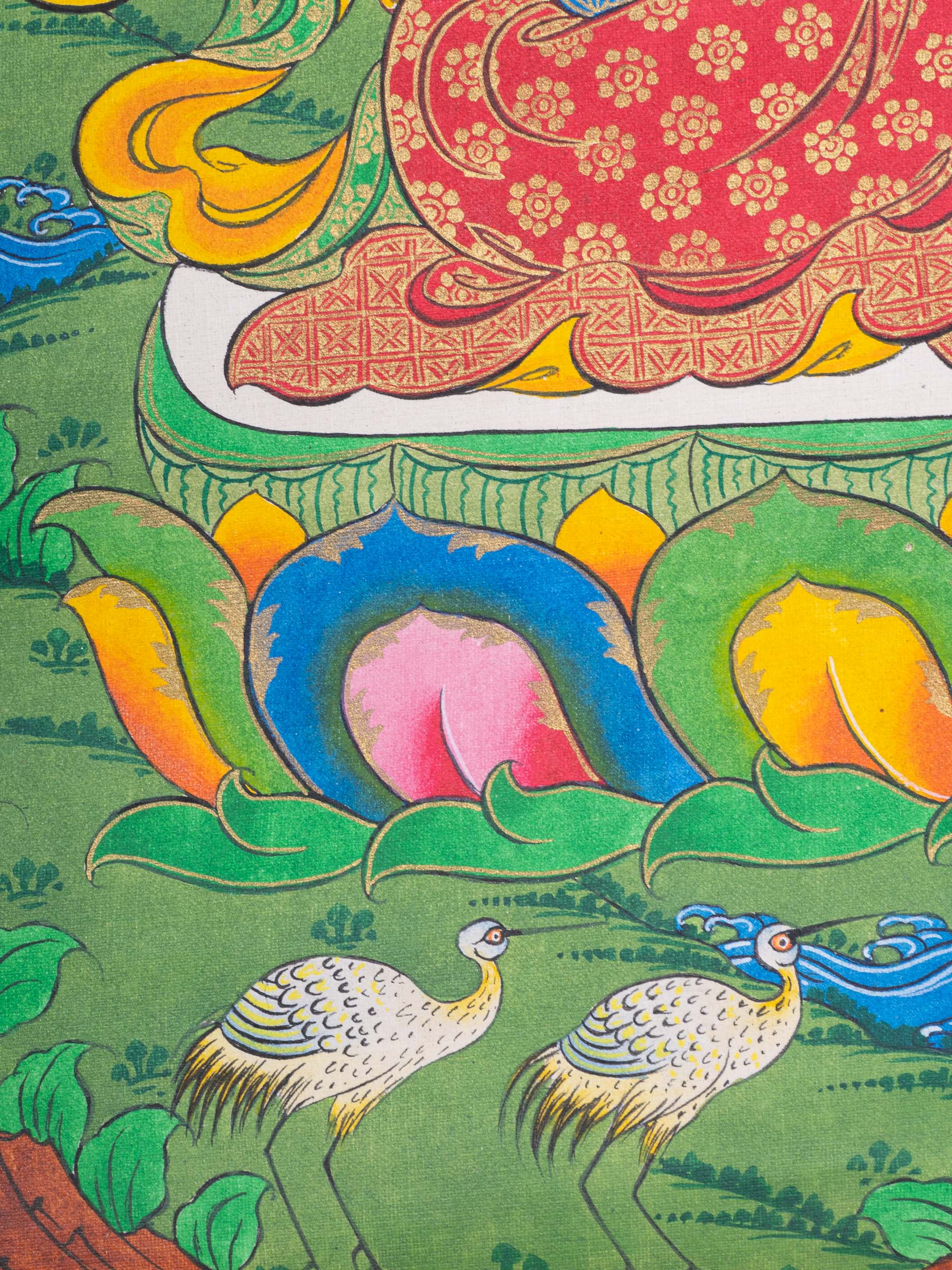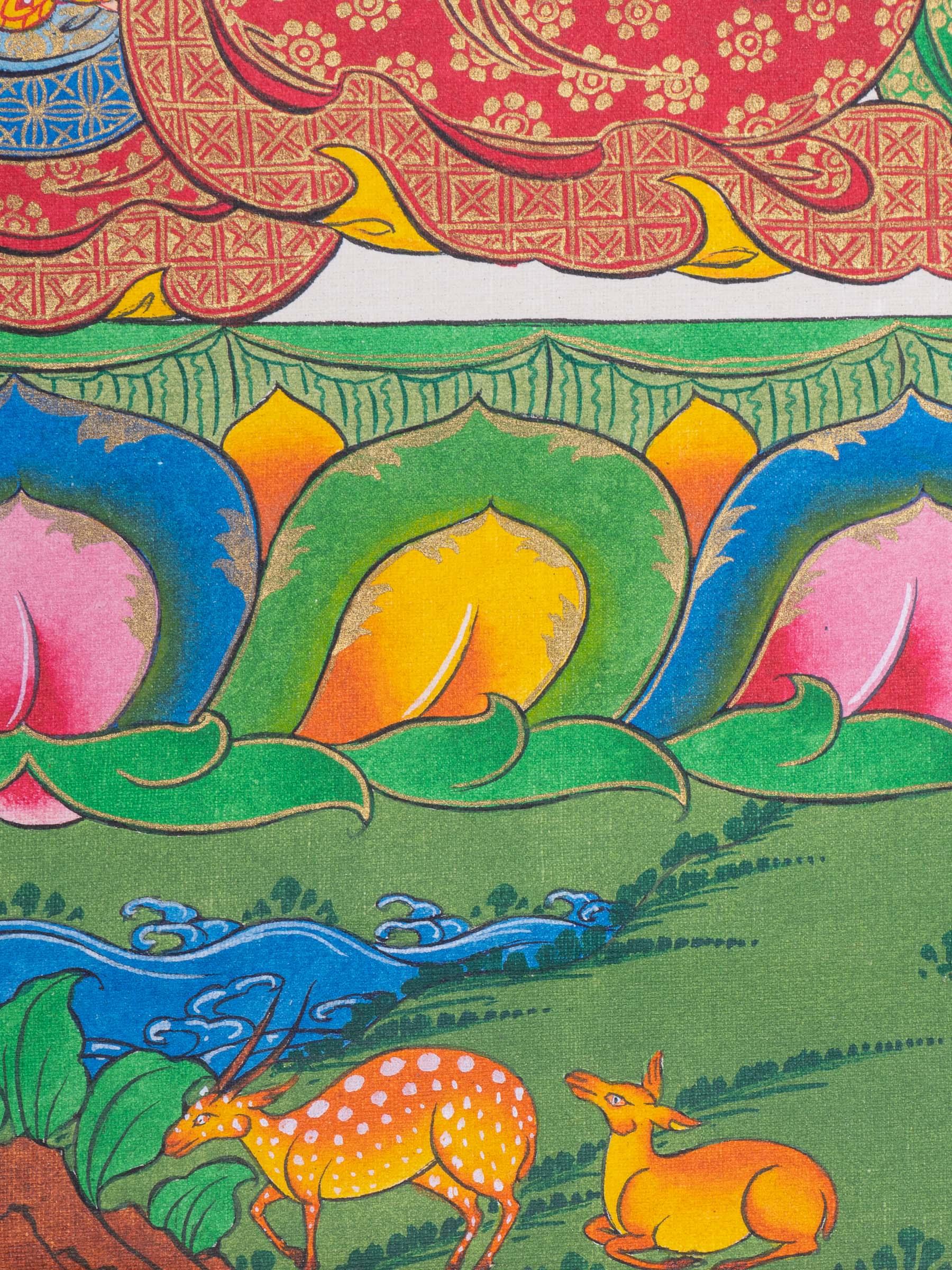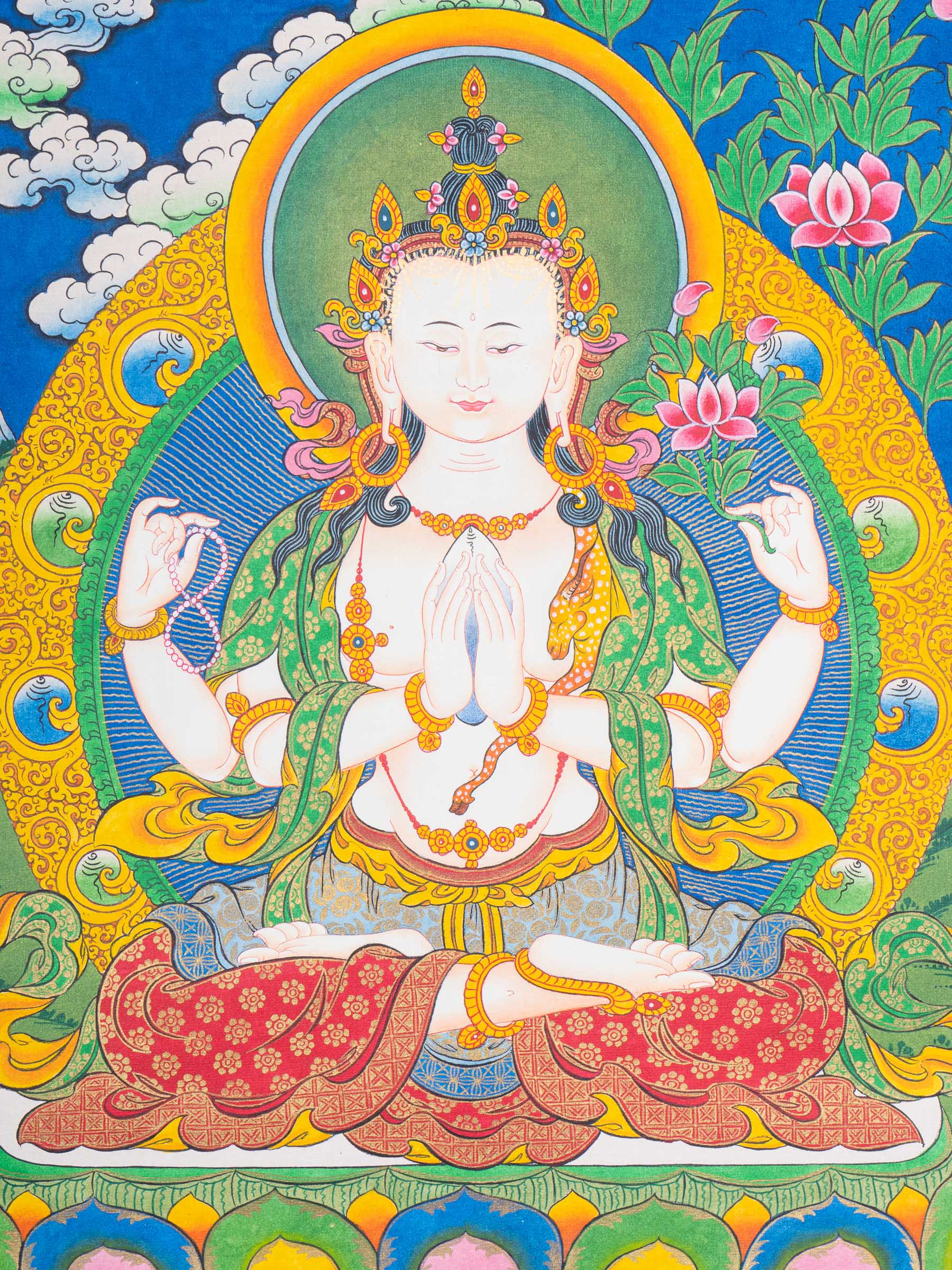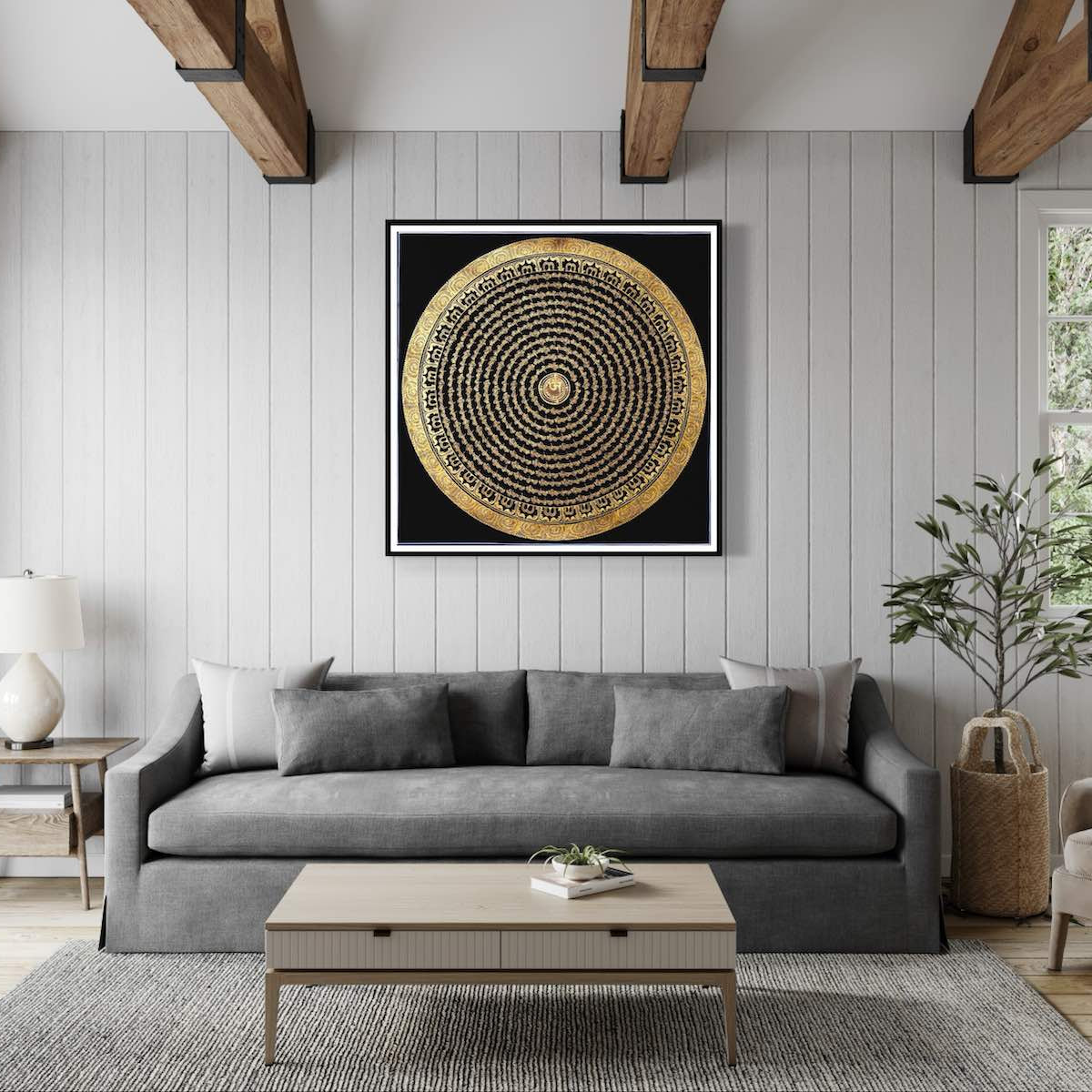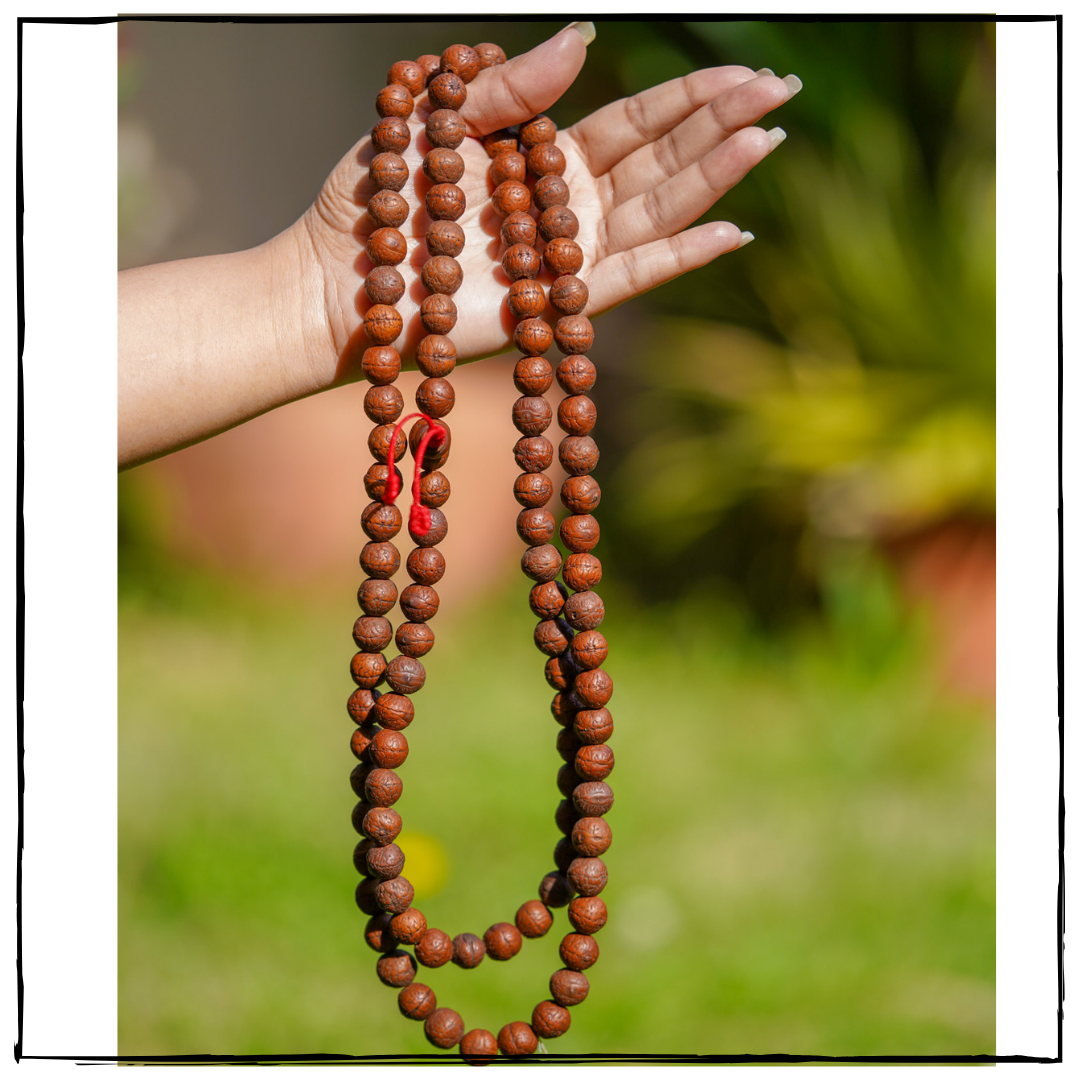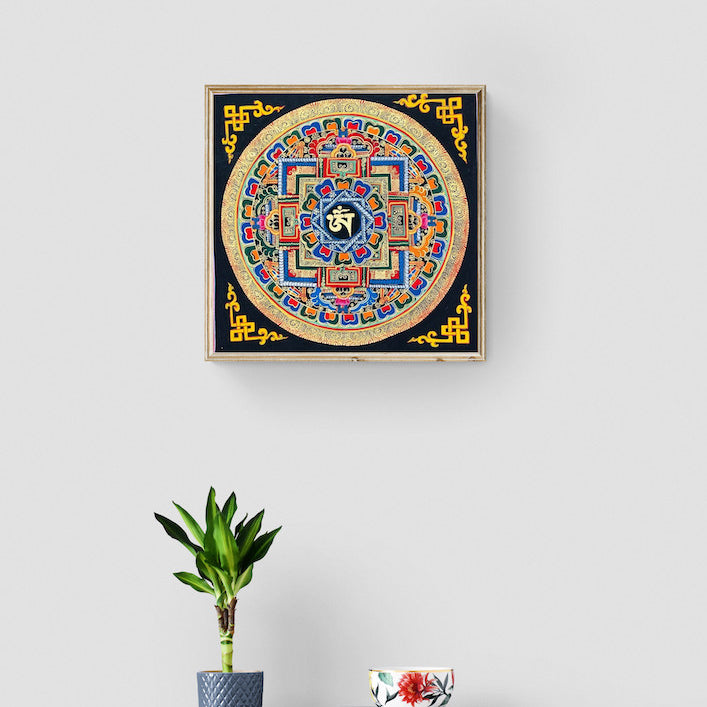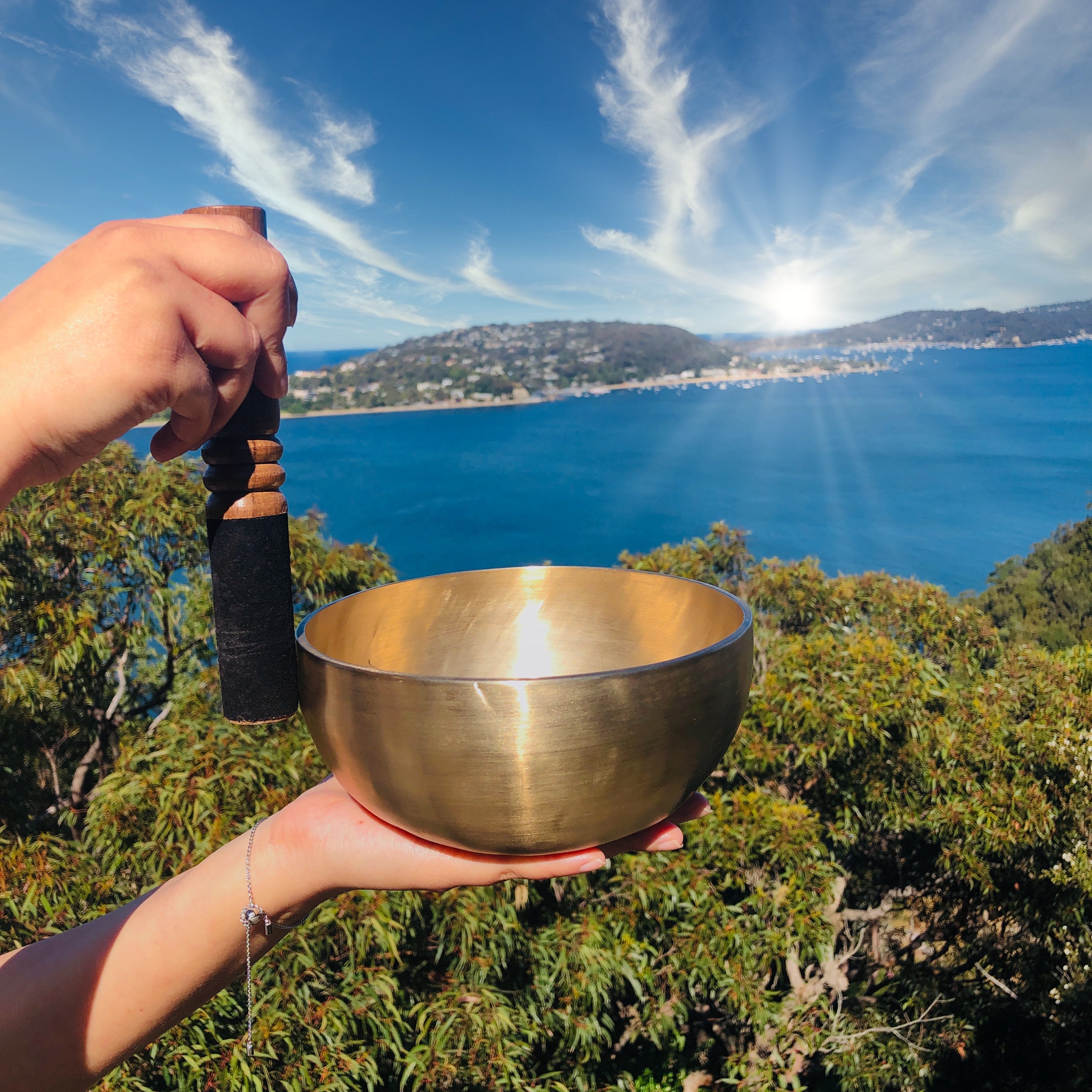Chengresi Thangka Painting
Couldn't load pickup availability
Description
Chengresi Thangkas portray the bodhisattva of compassion, a prominent figure in Tibetan Buddhism. Chenrezig, known in Tibetan as Avalokiteshvara, represents the compassionate nature of all Buddhas and is highly esteemed for his compassion towards all sentient beings. These thangka paintings are essential to Tibetan Buddhist tradition and art, serving to inspire devotion and facilitate meditation.
Key features:
- Central Figure:The principal deity is Chenrezig, frequently portrayed with numerous arms and heads, symbolizing his limitless empathy and capacity to assist all creatures. The most typical representation displays him with four arms, each bearing symbolic items or performing precise mudras.
- Symbolic Elements: Chenrezig holds his hands in a prayer position with a jewel and lotus flower, representing purity and the nature of beings. Additional hands hold a mala and lotus, symbolizing the importance of prayer and enlightenment.
- Elaborate Background: The background typically features intricate depictions of heavenly scenery and guardian beings. These elements enhance the spiritual and aesthetic charm, providing a divine backdrop for Chenrezig.
Product Specification:
- Hand Painted
- Size: 50 cm x 38 cm
- Base: Cotton Canvas
- Origination: Nepal
Every painting is nicely packed with hand made Lokta paper and is put inside a strong non bendable PVC Pipes for expedition.

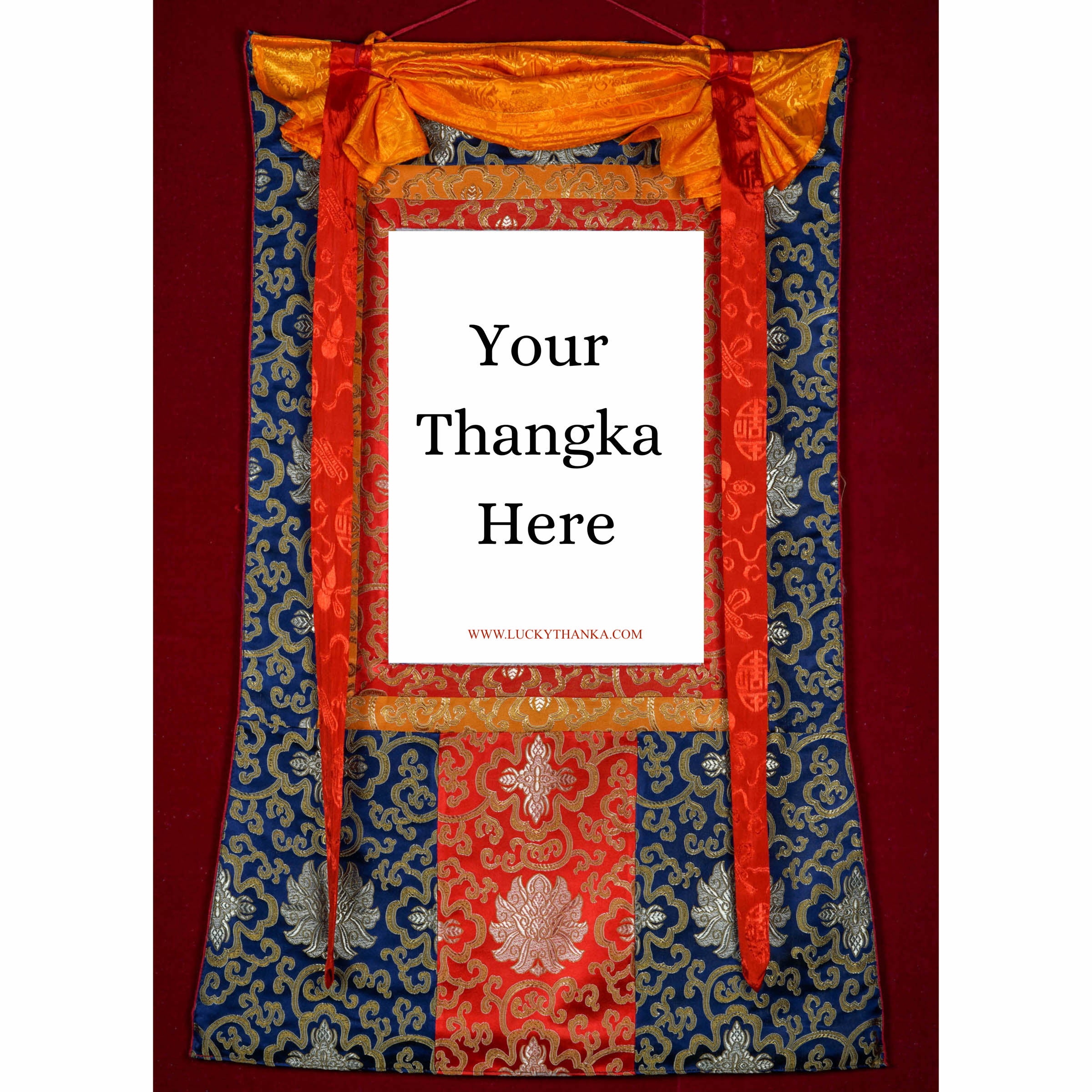
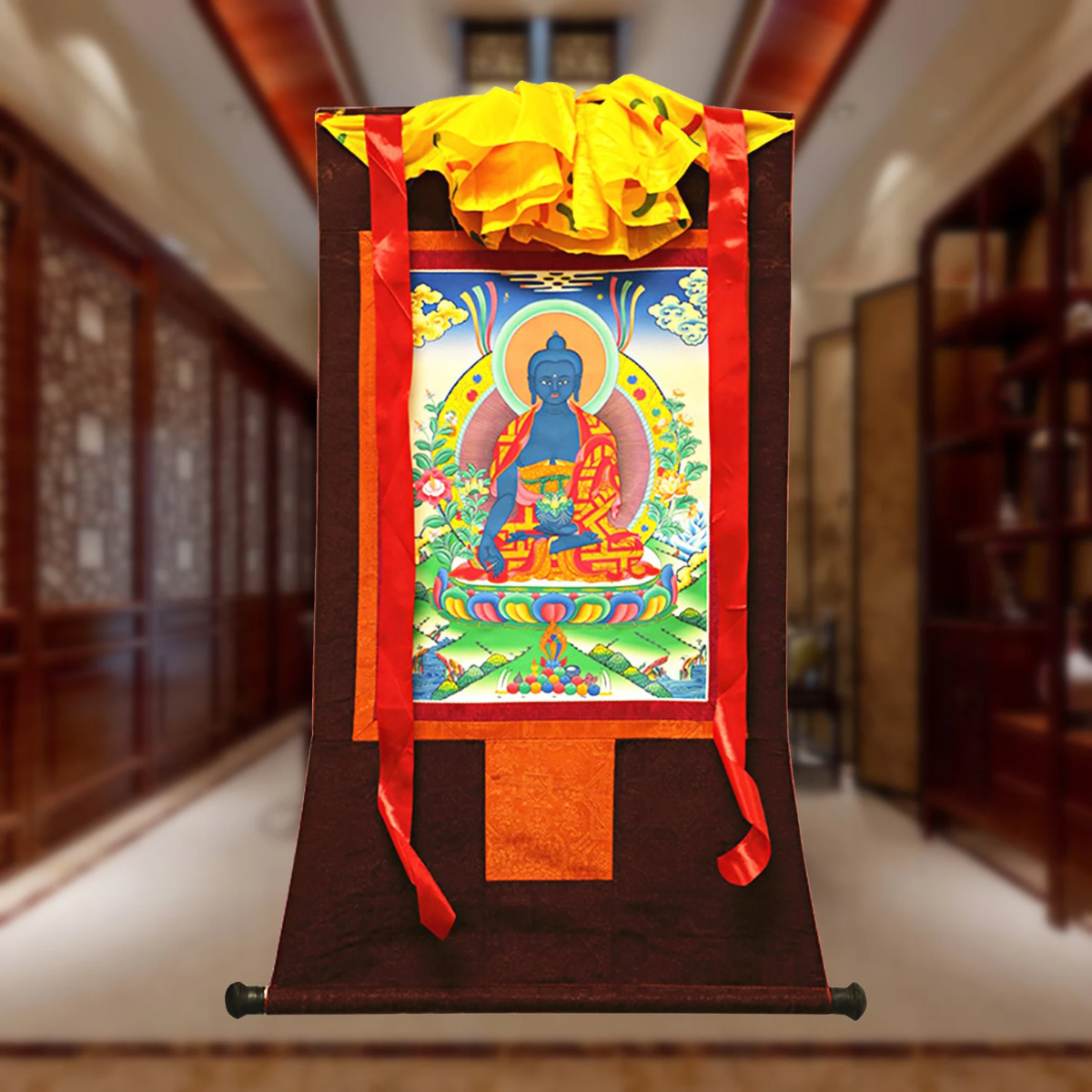
Hand Embroidery Brocade
Want to add a Brocade to your beautiful Thangka Painting? Traditional Style Brocade has been one of the most popular form of mounting as it has a greater religious merit.
Note: Make sure you have added the Thangka to your cart first.
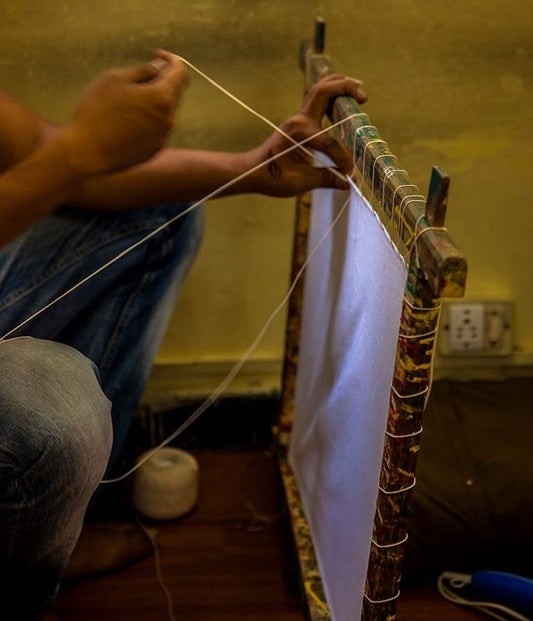
100% Cotton Canvas
Preparing the Cotton canvas before starting to paint a Thangka. This process includes washing, drying, stretching, sizing and everything needed to make a perfect base for the thangka to last for centuries.
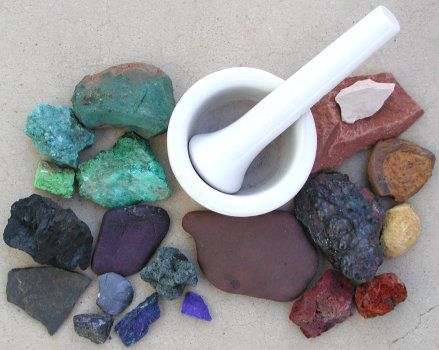
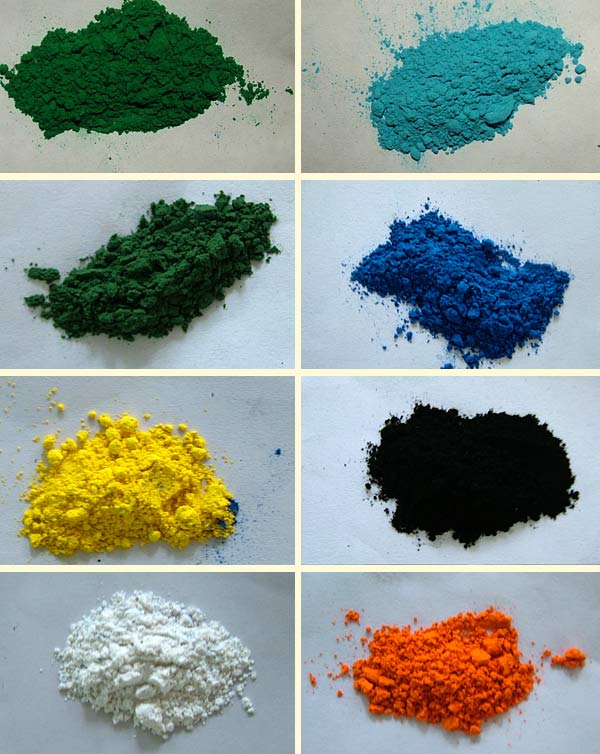
Natural Minerals
Thangka Paintings are painted using the natural minerals. These are firstly grind into the powder form and then used in the thangka as a paint.



